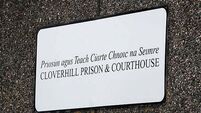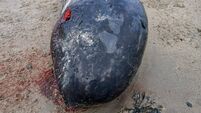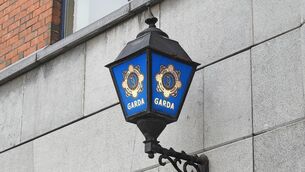Cannabis growhouses report: Weeding out crime

“This is not cannabis, but very potent skunk and weed. In the last three to four years, I deal with this more than any other drug. It is a serious issue.”
He said one teenager he was dealing with has built up a serious debt from his use of weed.
“He’s psychotic. He’s had shots fired into his house and his Ma has sent his brother out to deal to earn money and pay off the debt. I’m getting loads of referrals from probation and gardaí.”
The rise in cannabis-related problems is one that is reported by drug projects around the country. Unpublished figures from the Health Research Board show that the number of people entering treatment for cannabis as their main problem drug reached 2,216 in 2012 (or 29% of all cases). This compares to 2,086 in 2011, 1,519 in 2009 and 963 in 2007 (17% of all cases).
There is, as yet, no breakdown on the form of cannabis involved, but much of the recent rise is expected to be linked to high-strength herb.
For decades, cannabis resin, a milder form of the drug, accounted for the bulk of cannabis in the country. While significant quantities are still being caught, its dominance has evaporated.
As the figures published in the Irish Examiner today show, the number of resin seizures collapsed, from 2,839 in 2009 to 683 in 2012.
Parallel to that, the number of seizures of cannabis plants has doubled, from 253 to 513.
Also, there has been a continuing rise in the number of seizures of cannabis herb, from 2,358 to 2,568. Some of this herb, the final product from plants, is imported and some of it is from domestic factories.
These figures show that cannabis resin accounted for 52% of all cannabis seizures in 2009, but only 18% in 2012. Back in 2011, resin accounted for 75% of seizures.
In terms of the quantity of product seized, the figures show a 10-fold increase in the amount of cannabis plant confiscated, jumping from 5,713 to 55,483. The quantity of cannabis herb seized also rose, from 673kg to 994kg. At the same time, the quantity of cannabis resin, although still significant, fell from 1.7 tonnes to 1.2 tonnes.
According to Detective Sergeant Brian Roberts of the Garda National Drugs Unit (GNDU), the emergence of large-scale production of cannabis here followed the success of operations in the north.Operation Mazurka resulted in the seizure of £20m (€24m) worth of plants by the PSNI in 2007.
“That pushed the production south of the border, involving principally Vietnamese and Chinese,” said Sgt Roberts.
The operation in the north followed the mushrooming of cannabis production in Britain and other parts of the EU in previous years.
A major piece of analysis by the European Monitoring Centre for Drugs and Drug Addiction (EMCDDA) said the “landscape of the cannabis market has shifted dramatically”, starting in Belgium, the Netherlands, Denmark and the UK, which experienced “steep growth” in domestic production, followed thereafter by other European countries, including Ireland.
In Ireland, there were 100 seizures of plants in 2007, 160 in 2008, rising sharply to 584 in 2011.
“The change has been dramatic since 2007, with most cannabis herb now domestically cultivated,” said Sgt Roberts.
The GNDU responded by setting up a dedicated national operation, code-named Nitrogen, in 2007 to coordinate efforts across the country targeting cannabis production, which, Sgt Roberts said, has achieved “significant success”.
But it isn’t just the number of seizures, but the scale of the grow houses that the GNDU and local drug units were coming across.
With the recession, gangs have had little problem finding and renting unused warehouses, typically in remote locations, as well as normal residential properties, including in well-off areas, previously largely untouched by the drugs industry.
An analysis by the GNDU provides a breakdown on the type of cannabis grow houses seized over the last three years. They are divided into medium operations (producing between 10 and 24 plants at a time), large (25-99), very large (99-499) and industrial (500+).
As the accompanying table shows, the scale of production has increased since 2011, when there were 27 very large factories and 11 industrial seized. By 2012, that increased to 48 very large and 28 industrial factories (with 24 and 11 respectively to Sept 2013).
As a result, the overall quantity of plants seized from industrial grow houses jumped, from 11,000 in 2011 to almost 38,000 in 2012.
These operations run around the clock, capable of producing a harvest, from seed to mature plant, within eight to 12 weeks. Sgt Roberts said the gangs can have five or six harvests in a year. Not only that, but different rooms have harvests at different stages, ensuring there is a constant supply of the drug to satisfy demand.
Last November, Garda Commissioner Martin Callinan described the trade as a “a conveyor belt of money” for gangs. Based on its work, the GNDU estimates that the average industrial factory in 2012 and 2013 produced in the region of 1,300 plants in a harvest. Based on a valuation of €800 per plant in 2013 and five-to-six harvests, it estimates such factories had the potential to produce about €5.2m-€6.2m of product annually.
And with 11 industrial plants seized up to Sept 2013, this would suggest a total potential valuation in the region of €57m to €68m.
In 2012, plants were officially valued at half 2013 levels (€400). Based on 28 industrial factories seized in 2012, this would indicate they had the potential to produce between €73m and €87m worth of plants a year.
“The profits are quite staggering,” said Sgt Roberts. “It is probably the most profitable for all those involved in drug supply.”
Similar estimates for very large factories seized in 2013 and 2012 suggest they had the potential to produce between €22m and €27m worth of herb. In addition, large and medium factories could produce around €7m and €3m of product respectively.
In total, the factories uncovered in 2012 had the potential to produce between €104m and €123m worth of product a year. The figure for 2013 (based on figures to Sept) suggest an annual potential valuation of between €88m and €102m.
Indeed, given the €800 per plant valuation was effectively introduced in May 2012, this would greatly increase the yearly valuation in that year. But, officially, Garda figures use the €400 valuation for the entirety of 2012.
In addition, these figures, admittedly estimates, are based only on the factories that are uncovered. Gardaí also estimate that the typical factory that is uncovered could be in operation for between six months and 18 months beforehand.
The biggest factory busted last year was an industrial unit in Tuam, Co Galway, where 3,000 plants, worth €2.5m, were recovered.
The EMCDDA said Vietnamese gangs have become dominant across Europe, naming Ireland as among 10 countries where this is the case.
“Closed and hierarchical in structure, these groups have expanded to incorporate specialist roles for electricians, plumbers and managers of cultivation facilities,” said the EU drugs agency. It said gardeners tending the plants are often illegal migrants working to pay their passage.
“Investigations have shown that Vietnamese criminals in several countries may be connected, while similarities in equipment and growing and distribution methods suggest the existence of a criminal franchise system.”
It said Ireland, along with Britain, had also reported the involvement of Chinese nationals, which gardaí and court cases would support. Sgt Roberts said they have successfully targeted major players, including a recent conviction of a Chinese man linked to a network of factories, boasting €4.6m worth of cannabis.
He said that in recent years there had been a shift from just Chinese and Vietnamese to Irish criminals also being involved. In some cases they work in with Asian gangs. Eastern and Central European criminals are also involved.
“Many Irish gangs are involved in the trade, but not all of them in cultivation,” said Sgt Roberts. He pointed out that in the UK, out of an estimated 5,600 organised crime gangs, 1,600 were involved in cannabis cultivation.
Such is the demand for the strong cannabis, herb rose to over €20 per gramme, from €12 in 2011.
“What gets the top price is the flowering tops of the female plant,” said Sgt Roberts. “That has the highest THC [active chemical ingredient], over 20%.
“In the more sophisticated grow houses, the cannabis is grown from clones of mother female plants, from cuttings.”
This touches on an issue of concern to community workers and health experts: The increased potency of cannabis weed, versus resin. Research published in 2011 by the National Advisory Committee on Drugs highlighted the double whammy on users from weed, not only from the higher THC content, but the lower concentration of another chemical (CBD), which protects against the THC effect.
The study found that weed from seizures was around three times the strength (in terms of THC) than cannabis resin. Herbal cannabis ranged from 4% to 16% potency, compared to 1% and 5% for resin. The herbal cannabis linked to domestic production was between 14% and 16% in potency. The research also found that the presence of CBD tended to be either low or very low in herbal cannabis, but was in medium quantities in resin.
As the decriminalisation agenda emerges in Ireland (with calls for a debate from Citywide, a respected umbrella organisation of community projects, and campaigner Luke Flanagan TD) and gathers apace internationally (not least in Uruguay and Colorado in the US), the GNDU is gearing up for another busy year.
“Cannabis cultivation is a lucrative industry which is intrinsically linked to serious organised crime in this country,” said Sgt Roberts. “An Garda Síochána is committed to tackling the problem and targeting those involved.”
- Gangs are largely unhindered in buying huge quantities of equipment, such as high-intensity lamps, and industrial quantities of nutrients from legitimate stores.
Under the legislation, a retailer has to “know” what they are selling is going to be used to grow banned drugs. Section 4 of the Psychoactive Substances Act 2010 states: “A person who sells any object knowing that it will be used to cultivate by hydroponic means any plant in contravention of section 17 of the Act of 1977 shall be guilty of an offence.” It does not explain how a retailer should know.
Also, gardaí would find it virtually impossible to prove a retailer knew. In addition, the specification of “hydroponic means” (ie in mineral nutrients in water, without soil) is considered strange by legal observers, who question why the provision didn’t include cannabis grown in soil. As a result, a defence team could argue that a retailer could not be convicted where the cannabis was grown in soil, even if he/she knew it would be.
- Under the law, it is not illegal to sell cannabis seeds and retailers, including a number of growshops, continue to do so. It only becomes illegal once the seeds germinate and produce THC, the active chemical in cannabis.
- Laws do not allow gardaí to use the potential value of a crop under section 15a of the Misuse of Drugs Act, which lays down a presumptive minimum ten-year sentence for drugs valued over €13,000. The value under this section must relate to the value of the drug on the date of seizure, not when in matures. Gardaí can still use the potential value under other sections of the Act and sources said there is, in effect, little difference as the sentences do not differ much as few ten-year sentences apply in such cases.












